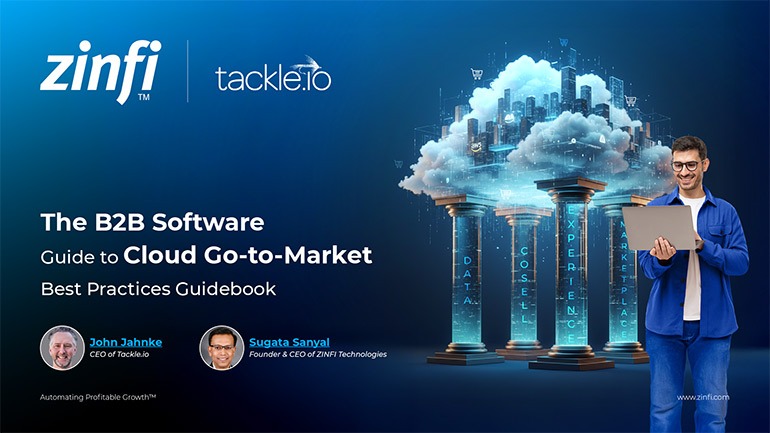Best Practices Articles

Lead Management Strategy? Which Management Strategy Should I Follow?
Channel sales are dependent on partners’ ability to generate, manage and close sales leads. Sometimes partners are able to generate new opportunities for a vendor, but in most cases vendors feed leads to their partners. Managing this process requires a diligent approach—otherwise, most leads go astray relatively quickly. In this article we will explore how to build a highly effective lead management system and process in a business-to-business environment. We will explore how to generate leads in the consumer segment at another time.
Building an effective lead management program should begin with three basic ideas: First, we need to acknowledge that all leads are not created equal; any lead management approach needs to take this principle into account. Second, leads vary greatly by vertical and by segment size (i.e., SMB, mid-market and enterprise). Third, leads tend to vary significantly depending on the products, solutions or services you are selling and who you are selling to. If you have a business that is narrow and focused and sell a product or solution to one or two segments, your job is significantly easier than if your business is very broad and sells globally with a whole bunch of solutions. Before you begin to build an effective lead management system, you should simplify, focusing on the most horizontal product and solution that covers most of your customers. Why? Because it’s much more practical to start in one market with one solution, and then scale locally and globally.
The topic of lead management is as vast as an ocean, so it’s not possible to address all aspects of it in one article, but I want to focus on one critical dimension which is based on the old cliché that goes, “Leads are like fish out of water—they only survive only so long.” When you think of lead management, always think of shelf life. While the shelf life will vary a lot depending on whether the lead is a marketing or sales qualified lead, or whether you are selling an SMB transactional product vs. a complex enterprise solution, in principle all leads have a finite shelf life. So, let’s start with that first.
Managing marketing qualified leads:
- Marketing qualified leads are basically earlier versions of a sales qualified leads, which are driven by the budget, authority, needs and timing (BANT) parameters of a potential prospect from your target market. The prospect generally meets these criteria for your types of solutions, has a defined purchase horizon or time frame, and has at least some level of ability to influence a future transaction.
- How you manage marketing leads and how you distribute them to your direct sales team or indirect sales team is a function of your go-to-market structure. Some organizations with more complex solutions for enterprises have specific lead development reps (LDRs) who follow up with marketing leads and nurture them over a period of time. Other organizations take a more digital approach to nurturing, often because average selling prices (ASPs) are lower.
- How you address marketing lead management is a direct function of what you are marketing. Marketing lead shelf-life tends to vary by months, and in some cases years—depending again on the complexity of the solution and how involved the buying process is.
- Because sales qualified leads are driven strictly by a prospect’s need, ability and timing to purchase a product, the shelf life of these leads can be significantly shorter. Therefore, these leads require a highly focused, fast-track approach, although the precise approach depends on what you are selling:
- If you are selling a transactional product (software, hardware or services) you will have to be able to let the buyer try out the product in some way, or at the very least understand clearly what they will buy without a trial. Most buyers back off if it is not clear to them what they are going to get, so lead management in this context tends to focus on deep engagement on the part of the buyer rather than just high-level category awareness.
- If, on the other hand, you are selling a more complex solution to an enterprise target, the lead management process may involve targeting multiple individuals. This scenario lends itself to account-based selling, where your sales team strategically targets various parts of an organization. From an organizational perspective, sales development reps or business development reps play a critical role in this area.
Best Practices Guides
 Modernizing Channel Marketing: AI and Ecosystem Enablement Best Practices
Modernizing Channel Marketing: AI and Ecosystem Enablement Best PracticesDownload for FREE
 The Channel’s Shift to Partner-Led With AI Best Practices
The Channel’s Shift to Partner-Led With AI Best PracticesDownload for FREE
 Hyperscalers, ISVs, and AI: Shaping the Future of B2B Software Distribution
Hyperscalers, ISVs, and AI: Shaping the Future of B2B Software DistributionDownload for FREE
 Definitive Guide to a Partner Ecosystem-First Sales Strategy
Definitive Guide to a Partner Ecosystem-First Sales StrategyDownload for FREE
 The Partner-Led Digital and AI Transformation Best Practices
The Partner-Led Digital and AI Transformation Best PracticesDownload for FREE
 Startup Talent Recruitment: Hiring Missionaries, Not Mercenaries
Startup Talent Recruitment: Hiring Missionaries, Not MercenariesDownload for FREE
 The Future of Partner Relationship Management with AI in Partnerships
The Future of Partner Relationship Management with AI in PartnershipsDownload for FREE
 Cybersecurity for the 99%: Strategies from the Frontline
Cybersecurity for the 99%: Strategies from the FrontlineDownload for FREE
 Mastering Partner Relationships: A Strategic Approach to Business Growth
Mastering Partner Relationships: A Strategic Approach to Business GrowthDownload for FREE
 Mastering Partner Relationship Management: Keys to SaaS Channel Success
Mastering Partner Relationship Management: Keys to SaaS Channel SuccessDownload for FREE
 Navigating the AI Revolution: Guide for Partners in the Microsoft Ecosystem
Navigating the AI Revolution: Guide for Partners in the Microsoft EcosystemDownload for FREE
 Mastering the Modern Buyers Journey: Sales Leader’s Guide to AI & Engagement
Mastering the Modern Buyers Journey: Sales Leader’s Guide to AI & EngagementDownload for FREE